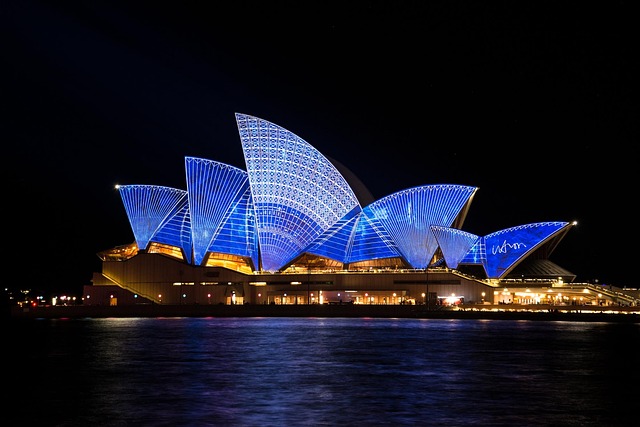Dutch Design: Innovation in Everyday Life

Dutch design is renowned worldwide for its innovative, functional, and aesthetically pleasing approach to everyday objects and spaces. Rooted in a tradition of practicality and creativity, Dutch design has influenced various fields, including architecture, product design, graphic design, and fashion. This article explores the principles of Dutch design, its historical context, and its impact on everyday life, highlighting some of the most iconic examples and contemporary trends.
1. Principles of Dutch Design
1.1 Functionality and Practicality
Dutch design is characterized by its emphasis on functionality and practicality. Designers prioritize creating objects and spaces that are not only visually appealing but also highly usable and efficient.
1.2 Minimalism and Simplicity
Minimalism is a key principle of Dutch design. The use of clean lines, simple forms, and a restrained color palette creates a sense of clarity and order. This approach reflects the Dutch value of “less is more.”
1.3 Innovation and Experimentation
Dutch designers are known for their innovative and experimental approach. They often push the boundaries of traditional design, exploring new materials, technologies, and concepts to create unique and forward-thinking solutions.
1.4 Sustainability
Sustainability is a growing focus in Dutch design. Designers are increasingly incorporating eco-friendly materials and practices, reflecting the Netherlands’ commitment to environmental responsibility.
2. Historical Context
2.1 De Stijl Movement
The De Stijl movement, founded in 1917, is one of the most influential periods in Dutch design history. Led by artists and designers such as Piet Mondrian and Gerrit Rietveld, De Stijl emphasized abstraction, geometric forms, and primary colors.
Iconic Works
- Red and Blue Chair by Gerrit Rietveld: A quintessential example of De Stijl design, featuring bold geometric forms and primary colors.
- Composition with Red, Blue, and Yellow by Piet Mondrian: A painting that embodies the principles of De Stijl, using simple geometric shapes and primary colors.
2.2 Dutch Modernism
In the mid-20th century, Dutch modernism emerged, characterized by functionalism and a focus on social responsibility. Designers like Mart Stam and Wim Crouwel played significant roles in this movement.
Iconic Works
- Cantilever Chair by Mart Stam: A pioneering design in modern furniture, featuring a cantilevered structure that eliminated the need for back legs.
- Typography by Wim Crouwel: Known for his innovative and experimental approach to typography, Crouwel’s work has had a lasting impact on graphic design.
3. Dutch Design in Everyday Life
3.1 Architecture
Dutch architecture is known for its innovative and functional approach. From historic canal houses to modern skyscrapers, Dutch architects have created iconic structures that blend form and function.
Iconic Examples
- Rietveld Schröder House by Gerrit Rietveld: A UNESCO World Heritage Site, this house is a masterpiece of De Stijl architecture, featuring flexible spaces and a minimalist aesthetic.
- Cube Houses by Piet Blom: Located in Rotterdam, these innovative houses are designed to resemble a forest of cubes, offering a unique living experience.
3.2 Product Design
Dutch product design is celebrated for its creativity and practicality. From furniture to household items, Dutch designers have created iconic products that are both functional and aesthetically pleasing.
Iconic Examples
- Droog Design: A collective of Dutch designers known for their innovative and often humorous approach to product design. Notable works include the “Chest of Drawers” by Tejo Remy, made from reclaimed drawers.
- Philips Design: The design division of Philips has produced numerous iconic products, including the Philips Hue smart lighting system, which combines functionality with cutting-edge technology.
3.3 Graphic Design
Dutch graphic design is characterized by its bold, experimental, and often playful approach. Dutch designers have made significant contributions to typography, branding, and visual communication.
Iconic Examples
- Total Design: Founded by Wim Crouwel, Total Design is one of the most influential design agencies in the Netherlands, known for its innovative approach to corporate identity and branding.
- Experimental Jetset: A contemporary design studio known for its work in typography and visual communication, including the redesign of the Stedelijk Museum’s identity.
3.4 Fashion
Dutch fashion is known for its avant-garde and experimental approach. Designers like Iris van Herpen and Viktor & Rolf have gained international acclaim for their innovative and artistic creations.
Iconic Examples
- Iris van Herpen: Known for her use of 3D printing and unconventional materials, van Herpen’s designs blur the line between fashion and art.
- Viktor & Rolf: This design duo is known for their theatrical and conceptual approach to fashion, often challenging traditional notions of clothing and beauty.
4. Contemporary Trends in Dutch Design
4.1 Sustainable Design
Sustainability is a growing focus in contemporary Dutch design. Designers are increasingly incorporating eco-friendly materials and practices, reflecting the Netherlands’ commitment to environmental responsibility.
Examples
- The Ocean Cleanup: A project by Dutch inventor Boyan Slat, aimed at removing plastic from the oceans. The design of the cleanup systems reflects a commitment to sustainability and innovation.
- Eco-Friendly Furniture: Designers like Piet Hein Eek create furniture from reclaimed materials, combining sustainability with aesthetic appeal.
4.2 Smart Design
The integration of technology into design is a key trend in contemporary Dutch design. From smart homes to wearable technology, Dutch designers are at the forefront of creating innovative and functional solutions.
Examples
- Smart Homes: Dutch companies like Nedap and Niko are leading the way in smart home technology, offering solutions that enhance convenience and energy efficiency.
- Wearable Technology: Dutch designers are exploring the potential of wearable technology, creating products that combine fashion with functionality.
4.3 Social Design
Social design focuses on creating solutions that address social issues and improve quality of life. Dutch designers are increasingly engaging in projects that have a positive social impact.
Examples
- Refugee Housing: Designers like Daan Roosegaarde have created innovative housing solutions for refugees, focusing on sustainability and community building.
- Public Spaces: Dutch designers are reimagining public spaces to promote social interaction and well-being, such as the “Rainbow Station” in Amsterdam, which features colorful, interactive lighting.
5. Dutch Design in Everyday Life
5.1 Urban Planning
Dutch urban planning is known for its innovative and people-centered approach. Cities like Amsterdam and Rotterdam are designed to promote cycling, walking, and public transportation, creating a high quality of life for residents.
Examples
- Cycling Infrastructure: The Netherlands has an extensive network of cycling paths, making it one of the most bike-friendly countries in the world.
- Public Spaces: Dutch cities feature numerous parks, plazas, and green spaces, designed to enhance community life and well-being.
5.2 Household Items
Dutch design is evident in everyday household items, from furniture to kitchenware. The emphasis on functionality and aesthetics ensures that these items are both practical and beautiful.
Examples
- Miffy (Nijntje): The iconic rabbit character created by Dick Bruna is a beloved symbol of Dutch design, known for its simple and timeless appeal.
- Dutch Ovens: Brands like Le Creuset and Staub have popularized the Dutch oven, a versatile and durable piece of cookware.



